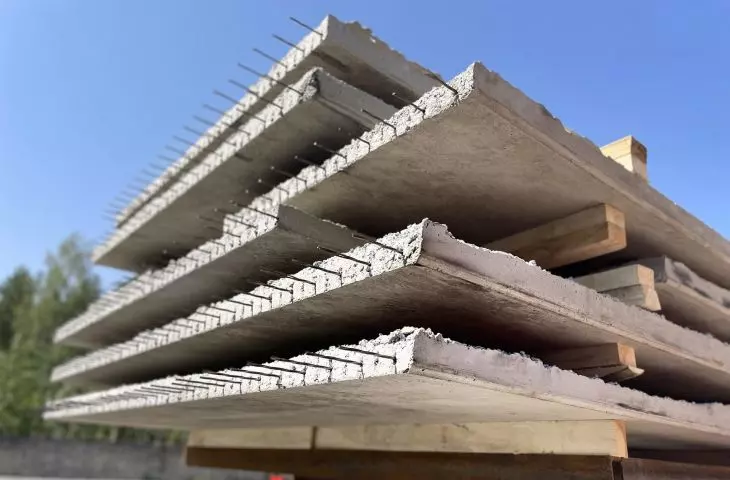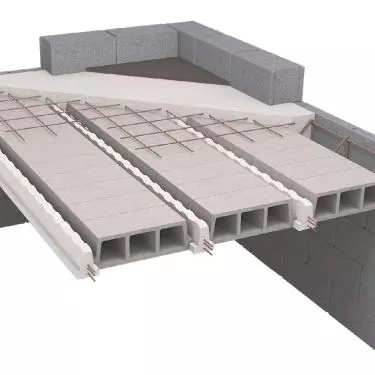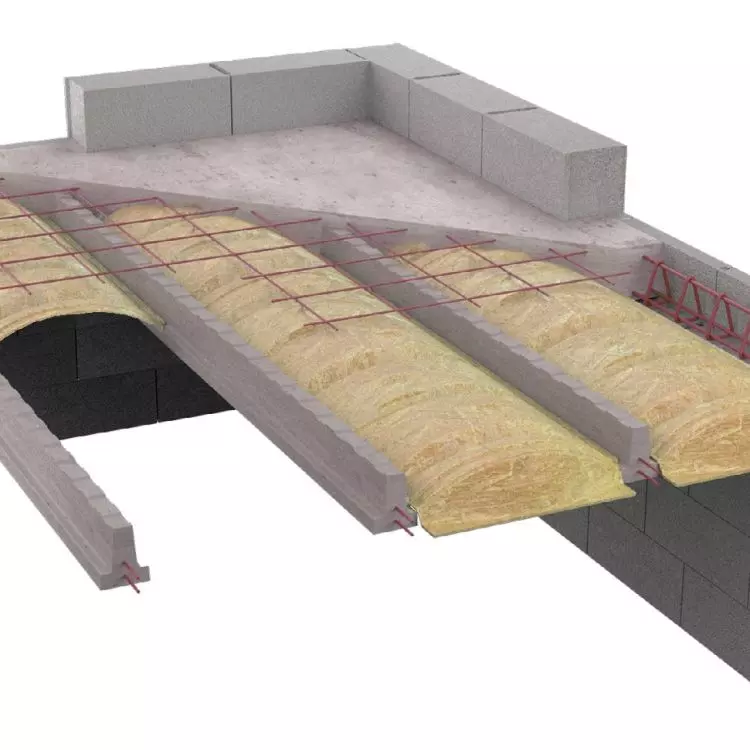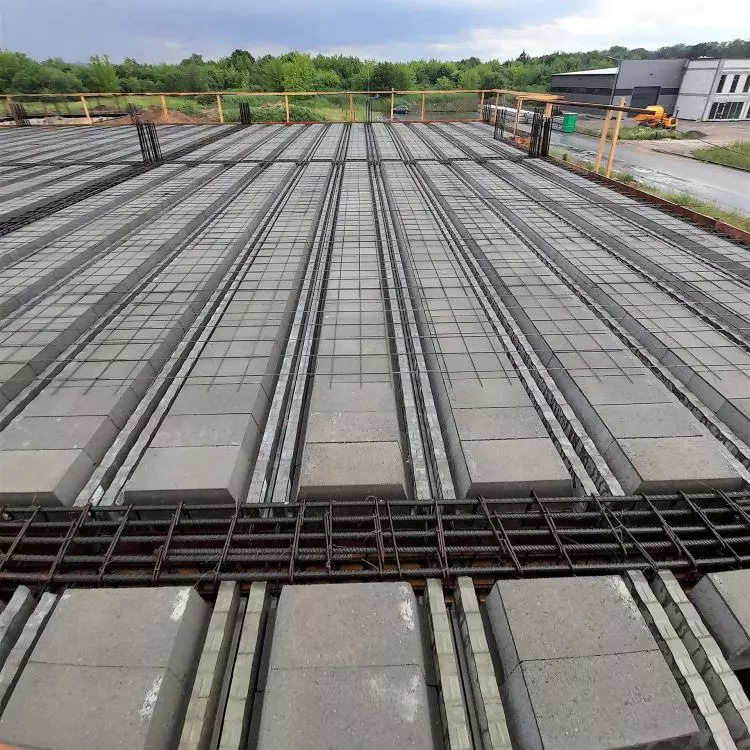Ceilings, though often out of sight, play a key role in ensuring the stability, functionality and safety of buildings. In this article, we take a look at the different types of ceilings, their functions and the factors that affect their durability and performance. We invite you to read on!
Where to buy a ceiling?
Choosing a ceiling from a proven manufacturer has many important benefits and can affect the quality, durability and safety of a building. Proven manufacturers use high-quality materials that are subjected to testing and quality control. This ensures that the ceilings will be strong, stable and long-lasting. One such company is Technobeton. It is also worth noting the offer of RECTOR Poland. The full list of manufacturers we recommend can be found in the search engine of the Products for Home portal under the keyword "ceilings".
What is a ceiling?
Ceiling is a structural element in construction, which separates the floors of a building or internal spaces, ensuring the load-bearing capacity and stability of the structure. Ceilings are used to divide the vertical space of a building into different levels on which rooms are located.
What role does the ceiling play in a building?
Here are the main roles the ceiling plays in a building:
Bearing capacity
Ceilings are designed to carry loads such as the structure's own weight, furniture, people, equipment and other elements. They are the primary structural element that allows a building to remain upright and holds the floors above them.
Separation and space
Ceilings separate different levels of a building, creating spaces between them. They make it possible to create multiple floors.
Acoustic and thermal insulation
Ceilings, especially those made of suitable materials, can help insulate sounds between levels of a building. This is important to provide acoustic comfort for residents or users of different spaces. By properly insulating the ceiling, you can also improve the energy efficiency of the building. By insulating the ceiling well, you can maintain proper room temperatures and reduce heat loss.
Fire safety
Some ceilings are designed to meet fire safety requirements, delaying the spread of fire to different levels of the building and allowing people to evacuate.
Installation support
Ceilings can contain spaces that allow concealment of utilities such as electrical wiring, plumbing pipes, ventilation systems, etc.
Ceiling system with concrete block infill
© RECTOR
What types of ceilings are there?
Reinforced concrete floors
Made of concrete reinforced with steel bars or mesh. They are strong and allow free shaping, which allows you to create different forms and configurations.
Wooden ceilings
Used in smaller buildings, usually on lower floors. They can be made of wooden beams or OSB (oriented strand board) panels.
Steel ceilings
Made of lightweight steel elements, such as steel beams. Used mainly in industrial halls and buildings with special structural requirements.
Slab ceilings
This is a type of prefabricated ceiling, which is pre-formed off-site and later assembled. They can be made of concrete or other material.
Reinforced concrete dense-rib floors
They are characterized by the presence of a dense system of beams and ribs, which increase the load-bearing capacity and rigidity of the structure.
Ceiling system with lightweight woodgrain panels
© RECTOR
How high is the ceiling in a block of flats?
In most newly built apartment blocks, the standard ceiling height is usually around 2.5 to 2.7 meters. This is the height that is generally accepted for apartments as providing adequate usable space.
What does the ceiling crack from?
Overloading
Excessive loads on the ceiling, such as too heavy furniture or equipment, or too many people in one place, can contribute to cracks.
Improper design
Incorrect load calculations or faulty structural designs can result in cracks in the ceiling, especially in areas of high stress concentration.
Ground movement and vibration
Landslides, ground level fluctuations or other geological movements can exert pressure on foundations and ceilings, which can lead to cracks. Also, intense vibrations, for example due to proximity to a busy street or other source of tremors, can damage the floor structure.
Temperature and moisture
Extreme temperature changes can cause materials to expand or contract, leading to stresses and cracks. Also, exposure of the ceiling to changes in humidity can affect its stability and strength, leading to cracking.
Performance defects
Errors in the construction process, such as improper preparation of the concrete mix, improper reinforcement or improper placement of concrete, can weaken the strength of the floor.
Building settlements
Natural building settlements, which can occur over time, can cause stresses in the structure, leading to cracks.
Goose rib ceiling
© TECHNOBETON
How much can the ceiling deflect?
The allowable deflection can vary depending on the type of building, the ceiling (reinforced concrete, steel, wood), the load (permanent, temporary), as well as other factors. In general, the allowable deflection of a ceiling in residential buildings usually ranges from 1/250 to 1/500 of the ceiling span. In other words, if the ceiling span is 5 meters, the allowable deflection varies from 10 mm to 20 mm.
How long does a ceiling take to dry?
Concrete ceilings
Concrete is a material that hardens as a result of a chemical reaction between cement and water. Although concrete quickly reaches a certain strength, it can take longer to fully cure and reach full strength. During the first few days after pouring the concrete, the floors may be fragile and sensitive. Full strength can be reached after a few weeks, or even a few months in some cases.
Prefabricated ceilings
Precast ceilings, which are pre-formed off-site, can reach full strength faster than monolithic ceilings. This is because the material is controlled under controlled factory conditions.
Wooden ceilings
Wooden ceilings, such as wood beams or OSB, can reach their full strength relatively quickly. However, the moisture content of the wood and the ambient climate will still affect the drying process.
Steel ceilings
Steel ceilings do not require drying in the same sense as hygrostatic materials. Steel is less susceptible to moisture than concrete or wood, but corrosion can still occur, so it is important to properly protect steel ceiling components from moisture.
***
We encourage you to use the database of reputable and reliable ceiling manufacturers we are building in the Products for Home portal, as well as the articles we publish about ceilings.




























